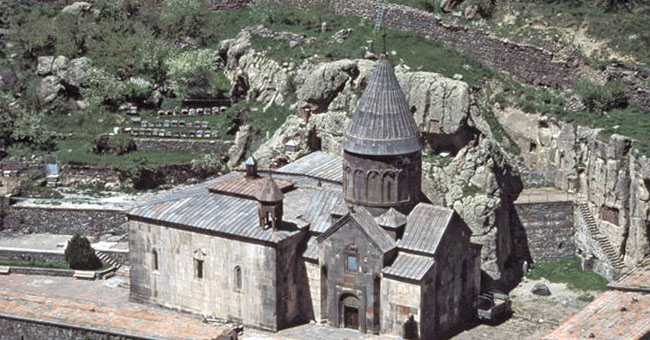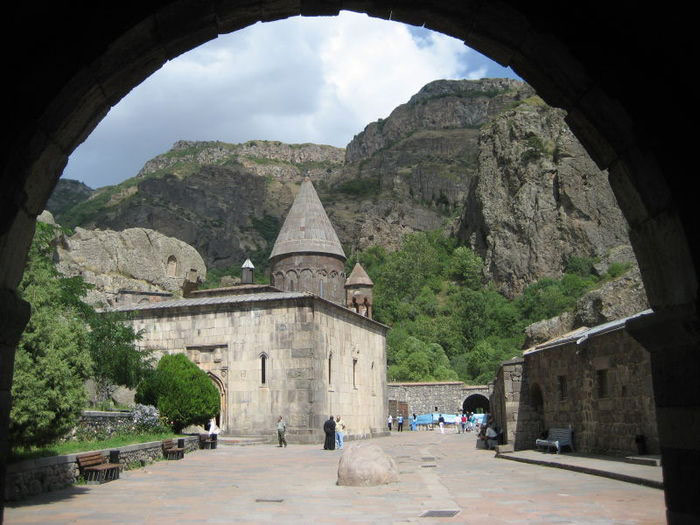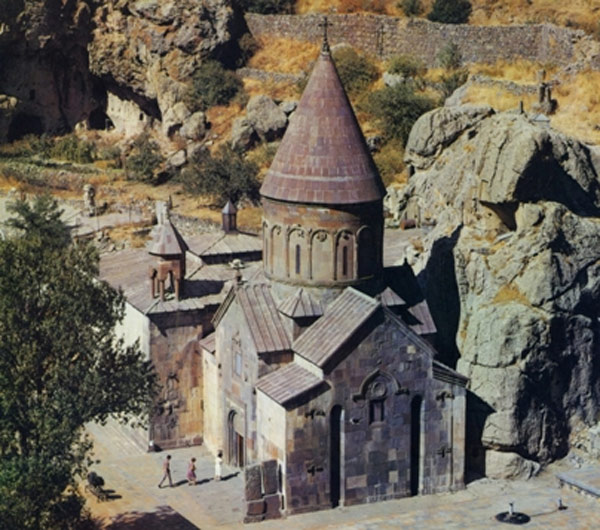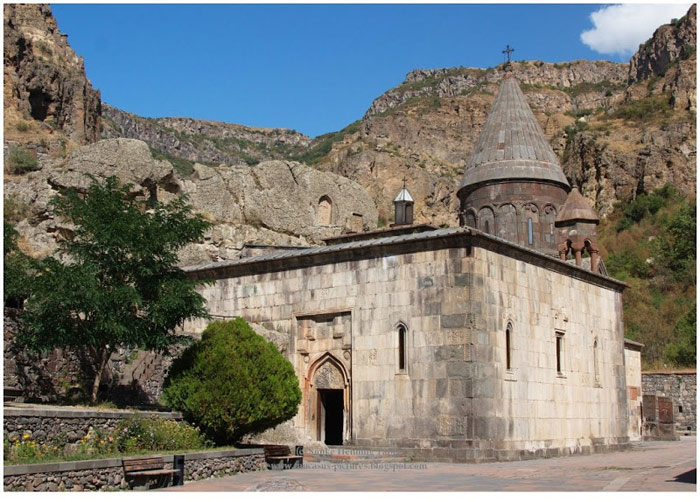Geghard Monastery and Azat Valley
The United Nations Science, Education and Cultural Organization recognized Armenia's Geghard monastery and Azat valley as a World Cultural Heritage in 2000.

Geghard Monastery and the view of the Azat valley
Geghard's monastery consists of several churches and tombs, most of which are carved into stone. The original name of the monastery is Ayrivank , which in Armenian means monastery in cave .

Geghard Monastery is a great illustration of Armenian medieval architecture . This complex is surrounded by towering cliffs at the entrance to the Azat Valley . The architecture as well as the design of Geghard Monastery with many innovative features had a tremendous influence on the development of the monastic system in general and architecture in particular for many years after that. Other in the same area.

Geghard Monastery was built in the 4th century, the era of St Gregory the Illuminator . By the 9th century, the monastery was destroyed by Arabs. However, by the 13th century, it was restored to its original state. Geghard monastery is famous for its relics, relics that it contains and retains, including the famous spear that pinned on Christ on the cross; or the relics of the apostles Andrew and John were given in the 12th century . Not only that many stories have told that this place is where the apostles brought Christ later when he was pinned to a cross. . Because of this legend, there are still many pilgrims who come here every year to pay tribute to Christ.

In 1250, stone churches in Geghard Monastery were built, the main church was completely built of stone and carved in stone. By 1283, the second church in the complex continued to be built. In the Geghard monastery, there is also the grave of Merik prince and Grigor . At that time, the monks lived simply and lacked days inside the caves inside the church. The oldest part of the Haghpat monastery complex is the small chapel of St Gregory, located east, outside the main group. The chapel is carved directly into the rock of the mountainside. The earliest written word is the inscription on the outside of the stone walls surrounding the monastery, believed to be from 1117.

By standards in medieval Armenian architecture , the structure of this building recreates the shape of a farmer's hut, in which the center column supports the roof with a wooden beam with a hole in the middle to catch the light. .


The intricate carvings inside the monastery with stone pillars and arches and walls are carved with many images.
In addition to the beautiful architecture, Geghard monastery was built in the Azat valley on a sacred stream . To this day, the pilgrims here still desire to drink water from this spring because they believe that the holy spring water will give them strength, avoiding all illnesses and diseases.

The corridor inside the monastery is also carved .
Geghard monastery along with the landscape of Azat valley was recognized as a world cultural heritage by Unesco not only by the natural beauty of the monk or the general landscape of the valley but also by the complex and sophisticated in every design of the works in the Geghard monastery complex.
- The 500-year-old Zen master remains intact with teeth and hair in India
- Orkhon Valley - World Cultural Heritage in Mongolia
- Tushilumpo Monastery - A marvelous architecture of Tibet
- Du spring Truc Lam Tay Thien Monastery
- The wonderful beauty of the sacred valley of the Incas
- Underground treasure in Valley of Kings
- Mysterious beauty of Death Valley in America
- The world is forgotten in the Omo Valley
- Sanahin Monastery - World Cultural Heritage in Armenia
- Monastery of Saint Catherine
- Silicon Valley is about to
- Monastery of Saint - Gall (Switzerland)
 Suzhou classic bonsai garden - China
Suzhou classic bonsai garden - China Chau Nguyen Dynasty
Chau Nguyen Dynasty Thai Son Mountain - World Wonder
Thai Son Mountain - World Wonder Ancient villages of Shirakawa-go and Gokayama
Ancient villages of Shirakawa-go and Gokayama